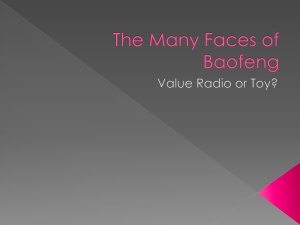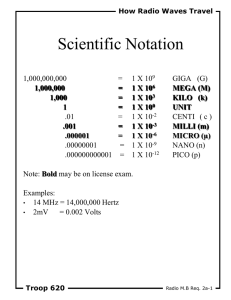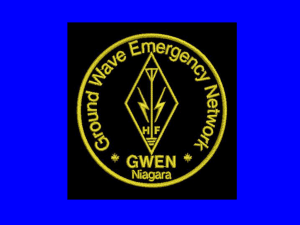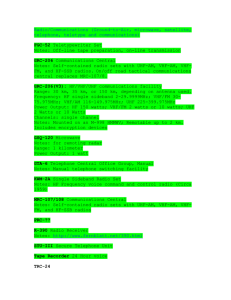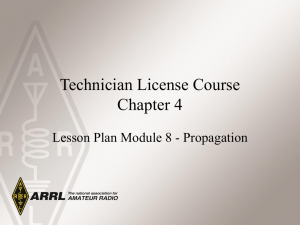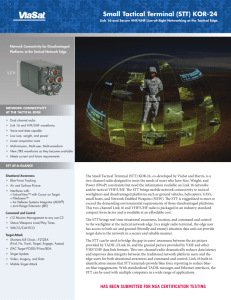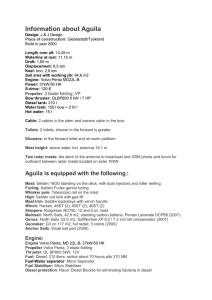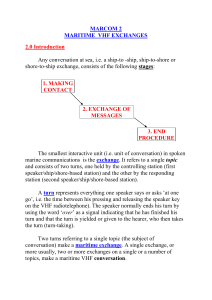How Signals Travel - Tri County Amateur Radio Club WX4TC
advertisement
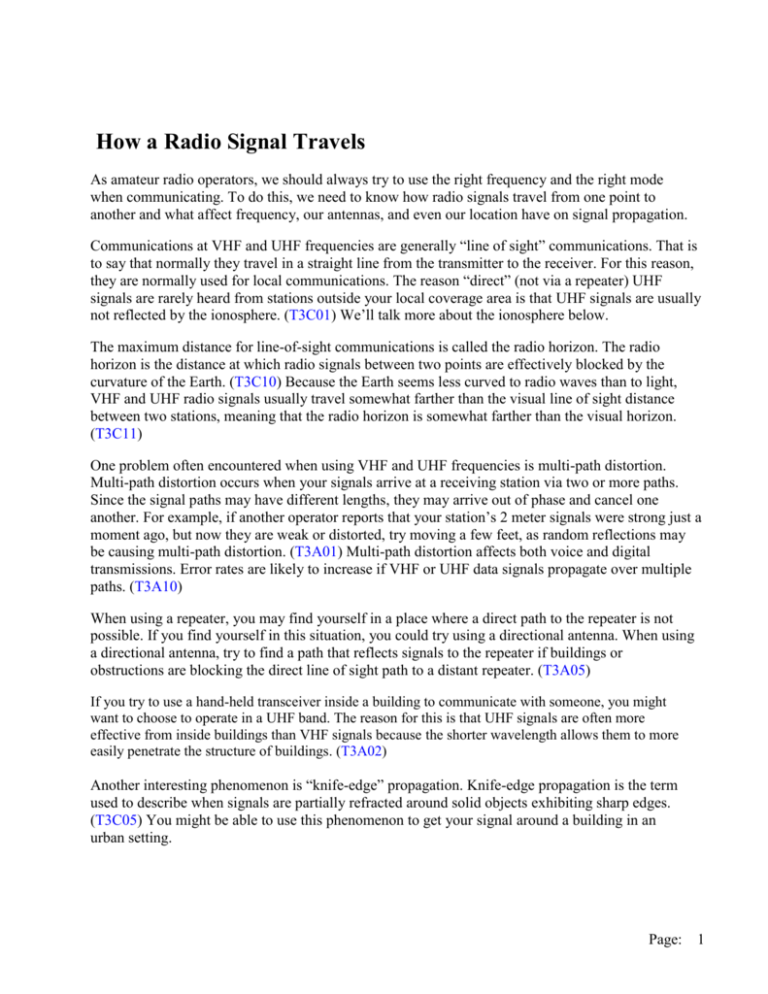
How a Radio Signal Travels As amateur radio operators, we should always try to use the right frequency and the right mode when communicating. To do this, we need to know how radio signals travel from one point to another and what affect frequency, our antennas, and even our location have on signal propagation. Communications at VHF and UHF frequencies are generally “line of sight” communications. That is to say that normally they travel in a straight line from the transmitter to the receiver. For this reason, they are normally used for local communications. The reason “direct” (not via a repeater) UHF signals are rarely heard from stations outside your local coverage area is that UHF signals are usually not reflected by the ionosphere. (T3C01) We’ll talk more about the ionosphere below. The maximum distance for line-of-sight communications is called the radio horizon. The radio horizon is the distance at which radio signals between two points are effectively blocked by the curvature of the Earth. (T3C10) Because the Earth seems less curved to radio waves than to light, VHF and UHF radio signals usually travel somewhat farther than the visual line of sight distance between two stations, meaning that the radio horizon is somewhat farther than the visual horizon. (T3C11) One problem often encountered when using VHF and UHF frequencies is multi-path distortion. Multi-path distortion occurs when your signals arrive at a receiving station via two or more paths. Since the signal paths may have different lengths, they may arrive out of phase and cancel one another. For example, if another operator reports that your station’s 2 meter signals were strong just a moment ago, but now they are weak or distorted, try moving a few feet, as random reflections may be causing multi-path distortion. (T3A01) Multi-path distortion affects both voice and digital transmissions. Error rates are likely to increase if VHF or UHF data signals propagate over multiple paths. (T3A10) When using a repeater, you may find yourself in a place where a direct path to the repeater is not possible. If you find yourself in this situation, you could try using a directional antenna. When using a directional antenna, try to find a path that reflects signals to the repeater if buildings or obstructions are blocking the direct line of sight path to a distant repeater. (T3A05) If you try to use a hand-held transceiver inside a building to communicate with someone, you might want to choose to operate in a UHF band. The reason for this is that UHF signals are often more effective from inside buildings than VHF signals because the shorter wavelength allows them to more easily penetrate the structure of buildings. (T3A02) Another interesting phenomenon is “knife-edge” propagation. Knife-edge propagation is the term used to describe when signals are partially refracted around solid objects exhibiting sharp edges. (T3C05) You might be able to use this phenomenon to get your signal around a building in an urban setting. Page: 1 Antenna polarization is also important at VHF and UHF frequencies. The orientation of the electric field is the property of a radio wave that is used to describe its polarization. (T3B02) Signals could be significantly weaker if the antennas at opposite ends of a VHF or UHF line of sight radio link are not using the same polarization. (T3A04) When using a repeater, vertical polarization is most often used. So, when using a hand-held transceiver, make sure to hold it so that your antenna is vertically oriented. On the other hand, horizontal antenna polarization is normally used for long-distance weak-signal CW and SSB contacts using the VHF and UHF bands. (T3A03) Mobile operation has its own unique challenges as your transmitter location is constantly changing. This means that the signal at the receiving station constantly changes as well. Picket fencing is the term commonly used to describe the rapid fluttering sound sometimes heard from mobile stations that are moving while transmitting. (T3A06) Even though VHF communications are most often line-of-sight, there are times when it’s possible to communicate over long distances. Sometimes, VHF signals will bounce off the E layer of the ionosphere. When VHF signals are being received from long distances, what might be happening is that signals are being refracted from a sporadic E layer. (T3C02) Sporadic E propagation is most commonly associated with occasional strong over- the-horizon signals on the 10, 6, and 2 meter bands. (T3C04) Other interesting propagation phenomena at VHF frequencies include aurora reflection, meteor scatter, troposphere scatter, and troposphere ducting. Bouncing signals off the earth’s aurora is very interesting. A characteristic of VHF signals received via aurora reflection is that the signals exhibit rapid fluctuations of strength and often sound distorted. (T3C03) Some hams also bounce signals off meteor showers. This propagation mode is called meteor scatter. Six (6) meters is the band best suited to communicating via meteor scatter! (T3C07) The troposphere is the lowest region of the atmosphere, extending from the earth's surface to a height of about 6–10 km. Troposphere scatter is the mode responsible for allowing over-the-horizon VHF and UHF communications to ranges of approximately 300 miles on a regular basis. (T3C06) Temperature inversion in the atmosphere causes “troposphere ducting.” (T3C08) Troposphere ducting can also propagate VHF signals for many hundreds of miles. REVIEW QUESTIONS: (18) T3C01 T3C10 T3A02 T3A05 T3A06 T3A03 T3C07 T3C06 T3C11 T3C05 T3C02 T3C08 T3A01 T3B02 T3C04 T3A10 T3A04 T3C03 Page: 2
